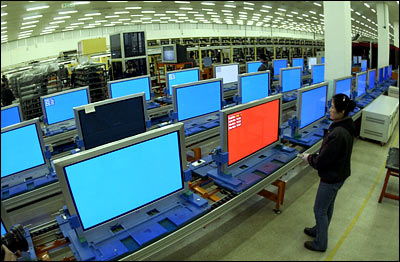Economic restructure is one of the most crucial elements of
China's reform and opening-up policy. Economic reforms began with
the rural areas in 1978, and were extended to the cities in 1984.
In 1992, after some 10 years of reform in the clear direction of
the establishment of a socialist market economy, the government set
out the main principles of economic restructuring: encouraging the
development of diversified economic elements whilst retaining the
dominance of the public sector; creation of a modern enterprise
system to meet the requirements of the market economy; a unified
and open market system across China, linking domestic and
international markets, and promoting the optimization of resources;
transformation of government economic management in order to
establish a complete macro-control system; encouraging certain lead
groups and areas to become rich first, enabling them to help others
towards prosperity too; the formulation of a China-appropriate
social security system for both urban and rural residents, so as to
promote overall economic development and ensure social
stability.
 |
A socialist market economic system has now taken shape, and the
basic role played by the market has been improved in the sphere of
resource allocation. At the same time, the macro-control system
continues to be perfected. The pattern has basically been formed in
which the public sector plays the main role alongside non-public
sectors such as individual and private companies to achieve common
development. According to the plan, China is forecast to have a
relatively complete socialist market economy in place by 2010 and
this will become comparatively mature by 2020.